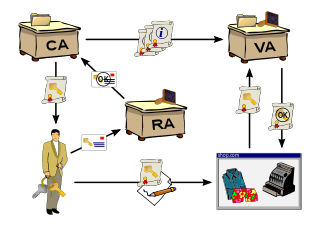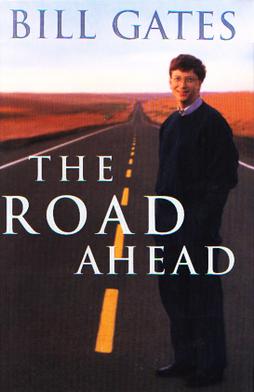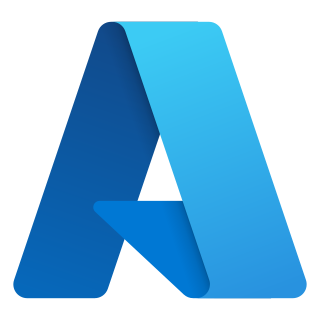Related Research Articles

William Henry Gates III is an American businessman, investor, philanthropist, and writer best known for co-founding the software giant Microsoft, along with his childhood friend Paul Allen. During his career at Microsoft, Gates held the positions of chairman, chief executive officer (CEO), president, and chief software architect, while also being its largest individual shareholder until May 2014. He was a prominent pioneer of the microcomputer revolution of the 1970s and 1980s.

Microsoft Corporation is an American multinational technology corporation headquartered in Redmond, Washington. Microsoft's best-known software products are the Windows line of operating systems, the Microsoft 365 suite of productivity applications, and the Edge web browser. Its flagship hardware products are the Xbox video game consoles and the Microsoft Surface lineup of touchscreen personal computers. Microsoft ranked No. 14 in the 2022 Fortune 500 rankings of the largest United States corporations by total revenue; it was the world's largest software maker by revenue as of 2022. It is considered one of the Big Five American information technology companies, alongside Alphabet, Amazon, Apple, and Meta.

Steven Anthony Ballmer is an American businessman and investor who was the chief executive officer of Microsoft from 2000 to 2014. He is the owner of the Los Angeles Clippers of the National Basketball Association (NBA). He is a co-founder of Ballmer Group, a philanthropic investment company. As of January 2024, Bloomberg Billionaires Index estimates his personal wealth at around $135 billion, making him the sixth-richest person in the world.

The Next-Generation Secure Computing Base is a software architecture designed by Microsoft which claimed to provide users of the Windows operating system with better privacy, security, and system integrity. NGSCB was the result of years of research and development within Microsoft to create a secure computing solution that equaled the security of closed platforms such as set-top boxes while simultaneously preserving the backward compatibility, flexibility, and openness of the Windows operating system. Microsoft's primary stated objective with NGSCB was to "protect software from software."

Unisys Corporation is an American multinational information technology (IT) services and consulting company founded in 1986 and headquartered in Blue Bell, Pennsylvania. The company provides digital workplace, cloud applications & infrastructure, enterprise computing, business process, AI technology and data analytics services.

A public key infrastructure (PKI) is a set of roles, policies, hardware, software and procedures needed to create, manage, distribute, use, store and revoke digital certificates and manage public-key encryption. The purpose of a PKI is to facilitate the secure electronic transfer of information for a range of network activities such as e-commerce, internet banking and confidential email. It is required for activities where simple passwords are an inadequate authentication method and more rigorous proof is required to confirm the identity of the parties involved in the communication and to validate the information being transferred.

The Road Ahead is a book written by Bill Gates, co-founder and former CEO of Microsoft; Nathan Myhrvold, Microsoft executive; and former Microsoft vice president Peter Rinearson. Published in November 1995, then substantially revised about a year later, The Road Ahead summarized the implications of the personal computing revolution and described a future profoundly changed by the arrival of a global information superhighway.

Pirates of Silicon Valley is a 1999 American biographical drama television film directed by Martyn Burke and starring Noah Wyle as Steve Jobs and Anthony Michael Hall as Bill Gates. Spanning the years 1971–1997 and based on Paul Freiberger and Michael Swaine's 1984 book Fire in the Valley: The Making of the Personal Computer, it explores the impact that the rivalry between Jobs and Gates (Microsoft) had on the development of the personal computer. The film premiered on TNT on June 20, 1999.

James Edward Allchin is an American computer scientist, philanthropist and guitarist. He is a former Microsoft executive.

B. Kevin Turner is an American businessman and investor who is the chairman of Zayo Group and the vice chairman of Albertsons/Safeway Inc.
Microsoft is a multinational computer technology corporation. Microsoft was founded on April 4, 1975, by Bill Gates and Paul Allen in Albuquerque, New Mexico. Its current best-selling products are the Microsoft Windows operating system; Microsoft Office, a suite of productivity software; Xbox, a line of entertainment of games, music, and video; Bing, a line of search engines; and Microsoft Azure, a cloud services platform.

Pen computing refers to any computer user-interface using a pen or stylus and tablet, over input devices such as a keyboard or a mouse.

Windows Speech Recognition (WSR) is speech recognition developed by Microsoft for Windows Vista that enables voice commands to control the desktop user interface, dictate text in electronic documents and email, navigate websites, perform keyboard shortcuts, and operate the mouse cursor. It supports custom macros to perform additional or supplementary tasks.

The Blue Screen of Death (BSoD), Blue screen error, Blue Screen, fatal error, or bugcheck, and officially known as a Stop error, is a critical error screen displayed by the Microsoft Windows and ReactOS operating systems in the event of a fatal system error.

Microsoft Azure, often referred to as Azure, is a cloud computing platform run by Microsoft. It offers access, management, and the development of applications and services through global data centers. It also provides a range of capabilities, including software as a service (SaaS), platform as a service (PaaS), and infrastructure as a service (IaaS). Microsoft Azure supports many programming languages, tools, and frameworks, including Microsoft-specific and third-party software and systems.

World Class IT: Why Businesses Succeed When IT Triumphs is a 2009 IT management book by Peter A. High that aims to provide a framework by which CIOs and other executives can promote IT within a business. High outlines five principles which align IT with business strategy and allow companies to monitor and improve IT's performance. The book highlights a 2000s trend that views IT as a digital nervous system which delivers corporate thinking to business units, partners and customers. Since the 2009 publication, the book has also been published in Mandarin and Korean editions.
Cloud gaming, sometimes called gaming on demand or game streaming, is a type of online gaming that runs video games on remote servers and streams the game's output directly to a user's device, or more colloquially, playing a game remotely from a cloud. It contrasts with traditional means of gaming, wherein a game is run locally on a user's video game console, personal computer, or mobile device.

In electronics, flip-flops and latches are circuits that have two stable states that can store state information – a bistable multivibrator. The circuit can be made to change state by signals applied to one or more control inputs and will output its state. It is the basic storage element in sequential logic. Flip-flops and latches are fundamental building blocks of digital electronics systems used in computers, communications, and many other types of systems.

HP Cloud was a set of cloud computing services available from Hewlett-Packard that offered public cloud, private cloud, hybrid cloud, managed private cloud, and other cloud services. It was the combination of the previous HP Converged Cloud business unit and HP Cloud Services, an OpenStack-based public cloud. It was marketed to enterprise organizations to combine public cloud services with internal IT resources to create hybrid clouds, or a mix of private and public cloud environments, from around 2011 to 2016.
Microsoft, a technology company historically known for its opposition to the open source software paradigm, turned to embrace the approach in the 2010s. From the 1970s through 2000s under CEOs Bill Gates and Steve Ballmer, Microsoft viewed the community creation and sharing of communal code, later to be known as free and open source software, as a threat to its business, and both executives spoke negatively against it. In the 2010s, as the industry turned towards cloud, embedded, and mobile computing—technologies powered by open source advances—CEO Satya Nadella led Microsoft towards open source adoption although Microsoft's traditional Windows business continued to grow throughout this period generating revenues of 26.8 billion in the third quarter of 2018, while Microsoft's Azure cloud revenues nearly doubled.
References
- ↑ Gates, Bill (1999). Business @ The Speed of Thought, Warner Books, New York. ISBN 0-446-67596-2
- ↑ "Digital Nervous System not Bill Gates' idea".
- ↑ Steve Ballmer Speech Transcript – Digital Nervous System Seminar
- ↑ Digital Nervous System 10/98
- ↑ "Moving Toward the Zero Latency Enterprise". Archived from the original on 2009-07-19. Retrieved 2009-05-02.